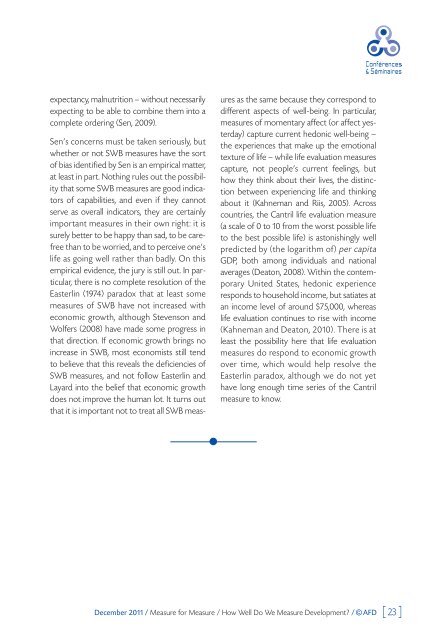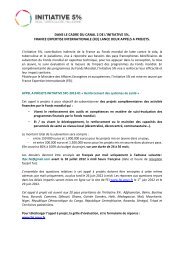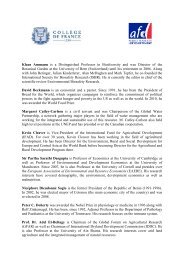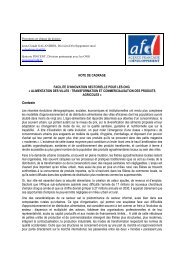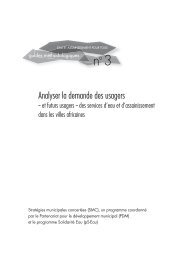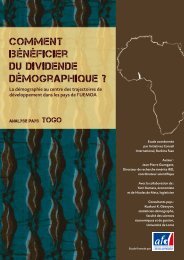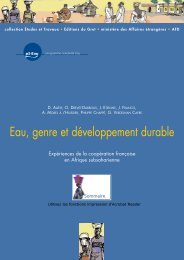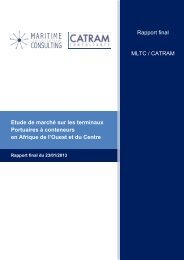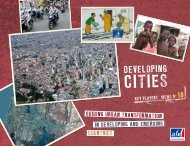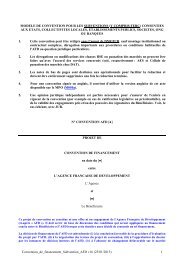Paris School of Economics - L'Agence Française de Développement
Paris School of Economics - L'Agence Française de Développement
Paris School of Economics - L'Agence Française de Développement
Create successful ePaper yourself
Turn your PDF publications into a flip-book with our unique Google optimized e-Paper software.
expectancy, malnutrition — without necessarily<br />
expecting to be able to combine them into a<br />
complete or<strong>de</strong>ring (Sen, 2009).<br />
Sen’s concerns must be taken seriously, but<br />
whether or not SWB measures have the sort<br />
<strong>of</strong> bias i<strong>de</strong>ntified by Sen is an empirical matter,<br />
at least in part. Nothing rules out the possibility<br />
that some SWB measures are good indicators<br />
<strong>of</strong> capabilities, and even if they cannot<br />
serve as overall indicators, they are certainly<br />
important measures in their own right: it is<br />
surely better to be happy than sad, to be carefree<br />
than to be worried, and to perceive one’s<br />
life as going well rather than badly. On this<br />
empirical evi<strong>de</strong>nce, the jury is still out. In particular,<br />
there is no complete resolution <strong>of</strong> the<br />
Easterlin (1974) paradox that at least some<br />
measures <strong>of</strong> SWB have not increased with<br />
economic growth, although Stevenson and<br />
Wolfers (2008) have ma<strong>de</strong> some progress in<br />
that direction. If economic growth brings no<br />
increase in SWB, most economists still tend<br />
to believe that this reveals the <strong>de</strong>ficiencies <strong>of</strong><br />
SWB measures, and not follow Easterlin and<br />
Layard into the belief that economic growth<br />
does not improve the human lot. It turns out<br />
that it is important not to treat all SWB meas-<br />
ures as the same because they correspond to<br />
different aspects <strong>of</strong> well-being. In particular,<br />
measures <strong>of</strong> momentary affect (or affect yesterday)<br />
capture current hedonic well-being —<br />
the experiences that make up the emotional<br />
texture <strong>of</strong> life — while life evaluation measures<br />
capture, not people’s current feelings, but<br />
how they think about their lives, the distinction<br />
between experiencing life and thinking<br />
about it (Kahneman and Riis, 2005). Across<br />
countries, the Cantril life evaluation measure<br />
(a scale <strong>of</strong> 0 to 10 from the worst possible life<br />
to the best possible life) is astonishingly well<br />
predicted by (the logarithm <strong>of</strong>) per capita<br />
GDP, both among individuals and national<br />
averages (Deaton, 2008). Within the contemporary<br />
United States, hedonic experience<br />
responds to household income, but satiates at<br />
an income level <strong>of</strong> around $75,000, whereas<br />
life evaluation continues to rise with income<br />
(Kahneman and Deaton, 2010). There is at<br />
least the possibility here that life evaluation<br />
measures do respond to economic growth<br />
over time, which would help resolve the<br />
Easterlin paradox, although we do not yet<br />
have long enough time series <strong>of</strong> the Cantril<br />
measure to know.<br />
December 2011 / Measure for Measure / How Well Do We Measure Development? / © AFD [ 23<br />
]


